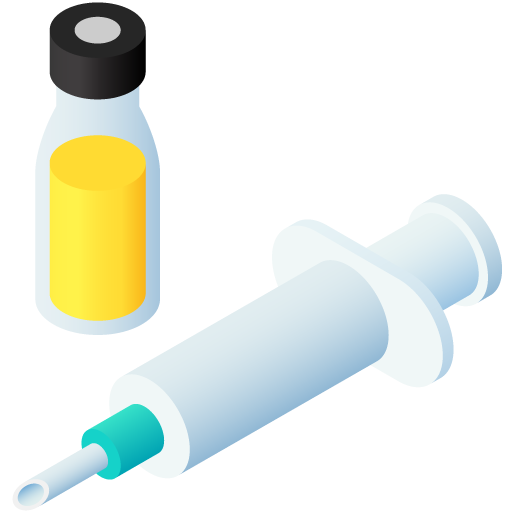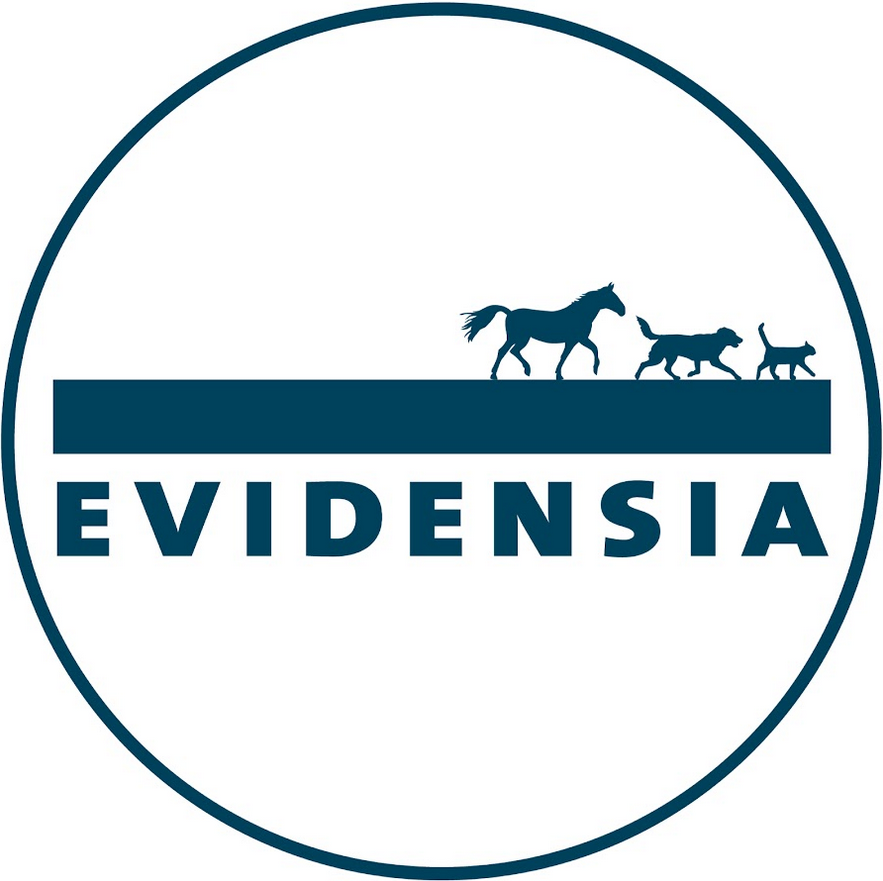Combination therapy
No results were found for your selected species
Covexin 10
Active substance
ATC code
Species
Sheep and cattle.
Indications
For the active immunisation of sheep and cattle against diseases associated with infections caused by Clostridium perfringens type A, C. perfringens type B, C. perfringens type C, C. perfringens type D, Clostridium chauvoei, Clostridium novyi type B, Clostridium septicum, Clostridium sordellii and Clostridium haemolyticum and against tetanus caused by Clostridium tetani.
For the passive immunisation of lambs and calves against infections caused by the above mentioned clostridial species (except C. haemolyticum in sheep).
Onset of immunity: 2 weeks after the basic vaccination course (as demonstrated by serology only).
Duration of active immunity as demonstrated by serology only:
Sheep: 1 year against C. perfringens type A, B, C and D, C. novyi type B, C. sordellii, C.
tetani
< 6 months against C. septicum, C. haemolyticum, C. chauvoei
Cattle: 1 year against C. tetani and C. perfringens type D
< 1 year against C. perfringens type A, B and C
< 6 months against C. novyi type B, C. septicum, C. sordellii, C. haemolyticum, C. chauvoei
Additionally, an anamnestic humoral immune response (immunological memory) to all components was demonstrated after antigen stimulation 1 year after the basic vaccination course.
Duration of passive immunity as demonstrated by serology only:
Lambs:
At least 2 weeks for C. septicum and C. chauvoei, at least 8 weeks for C. perfringens type B and C. perfringens type C and at least 12 weeks for C. perfringens type A, C. perfringens type D, C. novyi type B, C. tetani and C. sordellii. No passive immunity was observed for C. haemolyticum.
Calves:
At least 2 weeks for C. sordellii, and C. haemolyticum, at least 8 weeks for C. septicum and C. chauvoei and at least 12 weeks for C. perfringens type A, C.
perfringens type B, C. perfringens type C, C. perfringens type D, C. novyi type B, and C. tetani.
Dose to be administered and administration route
Sheep – from 2 weeks of age: Dose – 1 ml.
Cattle – from 2 weeks of age: Dose – 2 ml.
Administration:
By subcutaneous injection at a suitable site. The recommended site is the loose skin on the side of the neck.
The bottle should be well shaken before any vaccine is withdrawn.
Syringes and needles should be sterile before use and the injection should be made through an area of clean, dry skin taking precautions against contamination.
Basic vaccination scheme:
Two doses should be administered, 4-6 weeks apart (see section 4.2 and 4.4).
Re-vaccination scheme:
A single dose should be administered every 6 to 12 months after the basic vaccination scheme (see also point 4.2).
Use in pregnancy:
To provide passive protection of the offspring, via the colostrum, a single booster dose should be administered between 8 and 2 weeks before parturition, provided that animals have received a full basic vaccination course before pregnancy.
Adverse reactions
Sheep and cattle:
|
Very common (>1 animal / 10 animals treated): |
Injection site swelling1,2,6, Injection site induration2,6, Injection site reaction2,6, Hyperthermia |
|
Common (1 to 10 animals / 100 animals treated): |
Injection site abscess6, Injection site skin discolouration3,6, Injection site pain4,6 |
|
Very rare (<1 animal / 10,000 animals treated, including isolated reports): |
1Such a swelling may reach up to a mean value of 6 cm in diameter in sheep and 15 cm (sometimes up to 25 cm) in diameter in cattle.
2Most local reactions will resolve within 3-6 weeks in sheep and in less than 10 weeks in cattle but may persist longer.
3Returns to normal as the local reaction resolves.
4For 1 – 2 days post first vaccination.
5 If such reaction occurs, appropriate treatment such as adrenaline should be administered without delay.
6The local reactions do not affect the general health, demeanour, feeding or weight gain of the animals.
Reporting adverse events is important. It allows continuous safety monitoring of a veterinary medicinal product. Reports should be sent, preferably via a veterinarian, to either the marketing authorisation holder or the national competent authority via the national reporting system. See also section 16 of the package leaflet for contact details.
Dispensing
POM-VPS - Prescription Only Medicine – Veterinarian, Pharmacist, SQPSUMMARY OF PRODUCT CHARACTERISTICS
1. NAME OF THE VETERINARY MEDICINAL PRODUCT
Covexin 10 Suspension for injection for sheep and cattle
2. QUALITATIVE AND QUANTITATIVE COMPOSITION
Each 1 ml of vaccine contains:
Active substances:
|
C. perfringens type A toxoid |
≥ 0.9 U3 |
|
C. perfringens type B & C (β) toxoid |
≥ 12.4 U1 |
|
C. perfringens type D (ε) toxoid |
≥ 5.1 U1 |
|
C. chauvoei whole culture, inactivated |
meets Ph. Eur.2 |
|
C. novyi toxoid |
≥ 1.2 U1 |
|
C. septicum toxoid |
≥ 3.6 U1 |
|
C. tetani toxoid |
≥ 2.5 U1 |
|
C. sordellii toxoid |
≥ 0.8 U1 |
|
C. haemolyticum toxoid Adjuvant: |
≥ 16.5 U3 |
|
Alum Excipient: |
3.03 – 4.09 mg Aluminium |
|
thiomersal |
0.05 – 0.18 mg |
1 In-house ELISA
2 Challenge test according to Ph. Eur.
3 In vitro toxin neutralisation test based on haemolysis of sheep erythrocytes.
For the full list of excipients, see section 6.1.
3. PHARMACEUTICAL FORM
Suspension for injection.
Light brown aqueous suspension that settles on storage.
4. CLINICAL PARTICULARS
4.1 Target species Sheep and cattle.
4.2 Indications for use, specifying the target species
For the active immunisation of sheep and cattle against diseases associated with infections caused by Clostridium perfringens type A, C. perfringens type B, C. perfringens type C, C. perfringens type D, Clostridium chauvoei, Clostridium novyi type B, Clostridium septicum, Clostridium sordellii and Clostridium haemolyticum and against tetanus caused by Clostridium tetani.
For the passive immunisation of lambs and calves against infections caused by the above mentioned clostridial species (except C. haemolyticum in sheep).
Onset of immunity: 2 weeks after the basic vaccination course (as demonstrated by serology only).
Duration of active immunity as demonstrated by serology only:
Sheep: 12 months against C. perfringens type A, B, C and D, C. novyi type B, C. sordellii, C. tetani
< 6 months against C. septicum, C. haemolyticum, C. chauvoei
Cattle: 12 months against C. tetani and C. perfringens type D
< 12 months against C. perfringens type A, B and C
< 6 months against C. novyi type B, C. septicum, C. sordellii, C. haemolyticum, C. chauvoei
Additionally, an anamnestic humoral immune response (immunological memory) to all components was demonstrated after antigen stimulation 12 months after the basic vaccination course.
Duration of passive immunity as demonstrated by serology only:
Lambs:
At least 2 weeks for C. septicum and C. chauvoei, at least 8 weeks for C. perfringens type B and C. perfringens type C and at least 12 weeks for C. perfringens type A, C. perfringens type D, C. novyi type B, C. tetani and C. sordellii. No passive immunity was observed for C. haemolyticum.
Calves:
At least 2 weeks for C. sordellii, and C. haemolyticum, at least 8 weeks for C. septicum and C. chauvoei and at least 12 weeks for C. perfringens type A, C.
perfringens type B, C. perfringens type C, C. perfringens type D, C. novyi type B, and C. tetani.
4.3 Contraindications
Do not use in sick or immunodeficient animals.
4.4 Special warnings for each target species
Vaccinate healthy animals only.
The effectiveness of the vaccine in providing passive immunity to young lambs and calves depends on these animals ingesting adequate amounts of colostrum on the first day of life.
Clinical trials have demonstrated that the presence of maternal antibodies, particularly against C. tetani, C. novyi type B, C. perfringens type A (calves only), C. chauvoei (lambs only) and C. perfringens type D may reduce the antibody response to vaccination in young lambs and calves. Therefore, to ensure an optimal response in young animals with high levels of MDA, the basic vaccination should be delayed until the levels wane (which is after about 8-12 weeks of age, see section 4.2). 4.5 Special precautions for use Special precautions for use in animals
Not applicable.
Special precautions to be taken by the person administering the veterinary medicinal product to animals
In case of accidental self-injection, seek medical advice immediately and show the package leaflet or the label to the physician.
4.6 Adverse reactions (frequency and seriousness)
In the event of an anaphylactic reaction appropriate treatment such as adrenaline should be administered without delay.
Very commonly, animals vaccinated with Covexin 10 may experience reactions to vaccination. These reactions are usually localised swelling, induration or other reaction in the underlying tissue at the injection site (very commonly) but may also include mild hyperthermia (very commonly).
Swelling at the injection site occurs very commonly. This swelling may reach up to a mean value of 6 cm in diameter in sheep and 15 cm in diameter in cattle; though some cattle reactions of up to 25 cm in diameter may be observed. Most local reactions resolve within 3-6 weeks in sheep and in less than 10 weeks in cattle but may persist longer. Commonly, an abscess may develop in some animals.
Skin discolouration at the injection site (which returns to normal as the local reaction resolves) may commonly occur. Localised pain at the injection site for 1-2 days post first vaccination may occur commonly.
The local reactions do not affect the general health, demeanour, feeding or weight gain of the animals.
The frequency of adverse reactions is defined using the following convention:
- very common (more than 1 in 10 animals treated displaying adverse reaction(s))
- common (more than 1 but less than 10 animals in 100 animals treated)
- uncommon (more than 1 but less than 10 animals in 1,000 animals treated)
- rare (more than 1 but less than 10 animals in 10,000 animals treated)
- very rare (less than 1 animal in 10,000 animals treated, including isolated reports).
4.7 Use during pregnancy, lactation or lay
Pregnancy:
No side effects other than those described under 4.6 were seen when the vaccine was used in sheep and cattle between 8 and 2 weeks prior to parturition. In the absence of specific data, no recommendation can be made for use of the vaccine during the first or second third of pregnancy.
Avoid stress in pregnant ewes and cows.
4.8 Interaction with other medicinal products and other forms of interaction
No information is available on the safety and efficacy of this vaccine when used with any other veterinary medicinal product. A decision to use this vaccine before or after any other veterinary medicinal product, therefore, needs to be made on a case by case basis.
4.9 Amounts to be administered and administration route
Sheep – from 2 weeks of age: Dose - 1 ml.
Cattle – from 2 weeks of age: Dose – 2 ml.
Administration:
By subcutaneous injection at a suitable site. The recommended site is the loose skin on the side of the neck.
The bottle should be well shaken before any vaccine is withdrawn.
Syringes and needles should be sterile before use and the injection should be made through an area of clean, dry skin taking precautions against contamination.
Basic vaccination scheme:
Two doses should be administered, 4-6 weeks apart (see section 4.2 and 4.4).
Re-vaccination scheme:
A single dose should be administered every 6 to 12 months after the basic vaccination scheme (see also point 4.2).
Use in pregnancy:
To provide passive protection of the offspring, via the colostrum, a single booster dose should be administered between 8 and 2 weeks before parturition, provided that animals have received a full basic vaccination course before pregnancy.
4.10 Overdose (symptoms, emergency procedures, antidotes), if necessary
In calves and lambs, local reactions may increase slightly if twice the recommended dose is administered (refer to section 4.6).
4.11 Withdrawal period(s) Zero days.
5. IMMUNOLOGICAL PROPERTIES
Pharmacotherapeutic group: Immunologicals for Bovidae and Ovidae, inactivated bacterial vaccines (including mycoplasma, toxoid and chlamydia) for cattle and sheep, clostridium.
ATC-vet code: QI02AB01, QI04AB01.
To stimulate active immunity in sheep and cattle against C. chauvoei and the toxins of Clostridium perfringens type A, C. perfringens type B, C. perfringens type C, C.
perfringens type D, C. novyi, C. septicum, C. tetani, C. sordellii, and C. haemolyticum contained in the vaccine.
To provide passive immunity via the colostrum against the above mentioned clostridial infections in young lambs and calves.
6. PHARMACEUTICAL PARTICULARS
6.1 List of excipients
Alum
thiomersal Formaldehyde
Sodium Chloride
Water for injections
6.2 Major incompatibilities
Do not mix with any other veterinary medicinal product.
6.3 Shelf life
Shelf life of the veterinary medicinal product as packaged for sale: 24 months. Shelf life after first opening the immediate packaging: 8 hours.
6.4 Special precautions for storage
Store and transport refrigerated (2 °C – 8 °C).
Protect from light. Do not freeze.
6.5 Nature and composition of immediate packaging
Flexible high-density polyethylene (HDPE) bottle containing 50 ml or 100 ml. The plastic bottle is closed with a pharmaceutical grade chlorobutyl rubber stopper held in place with an aluminium cap.
Cardboard box with 1 bottle of 50 doses of 1 ml or 25 doses of 2 ml (50 ml).
Cardboard box with 1 bottle of 100 doses of 1 ml or 50 doses of 2 ml (100 ml).
Not all pack sizes may be marketed.
6.6 Special precautions for the disposal of unused veterinary medicinal product or waste materials derived from the use of such products
Any unused veterinary medicinal product or waste materials derived from such veterinary medicinal product should be disposed of in accordance with local requirements.
7. MARKETING AUTHORISATION HOLDER
Zoetis UK Limited
1st Floor, Birchwood Building
Springfield Drive
Leatherhead
Surrey
KT22 7LP
8. MARKETING AUTHORISATION NUMBER
Vm 42058/4022
9. DATE OF FIRST AUTHORISATION
11 March 2003
10. DATE OF REVISION OF THE TEXT
January 2021
Approved: 29/01/21


| Art. Nr. | 42058/5120 |
|---|---|
| EAN | 5013457085754 |
 TRUSTED SOURCE
TRUSTED SOURCE








